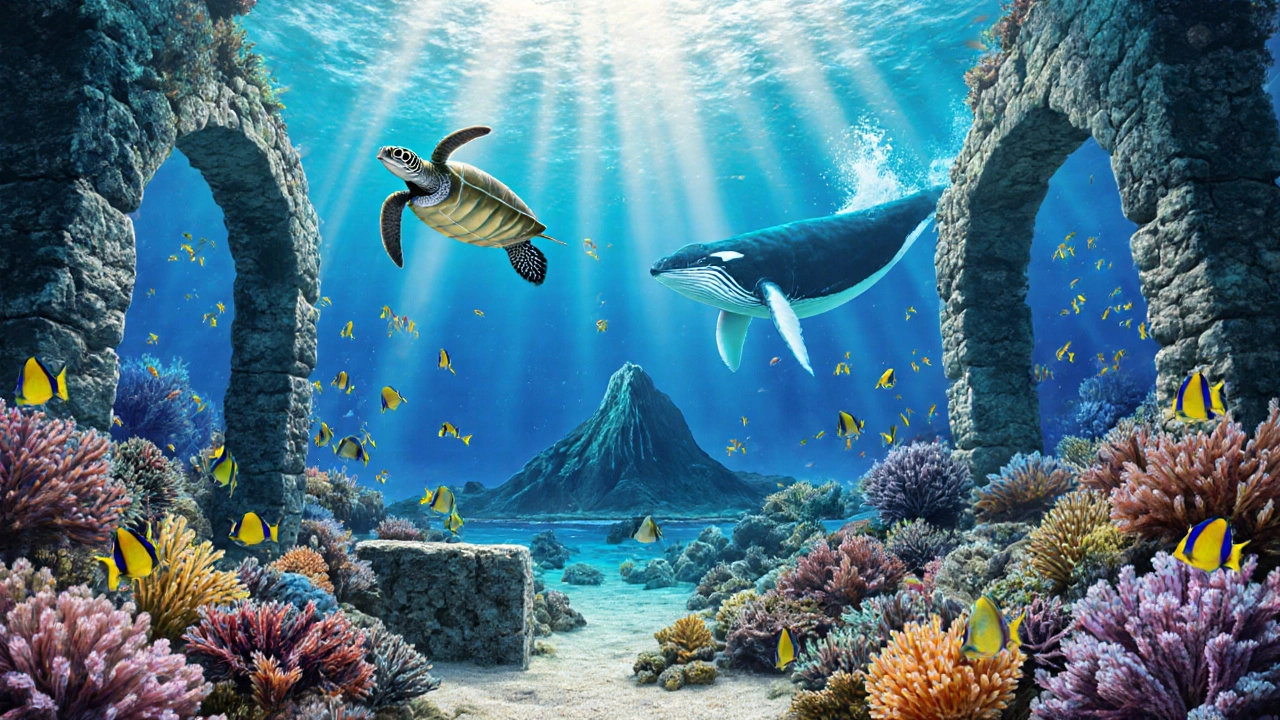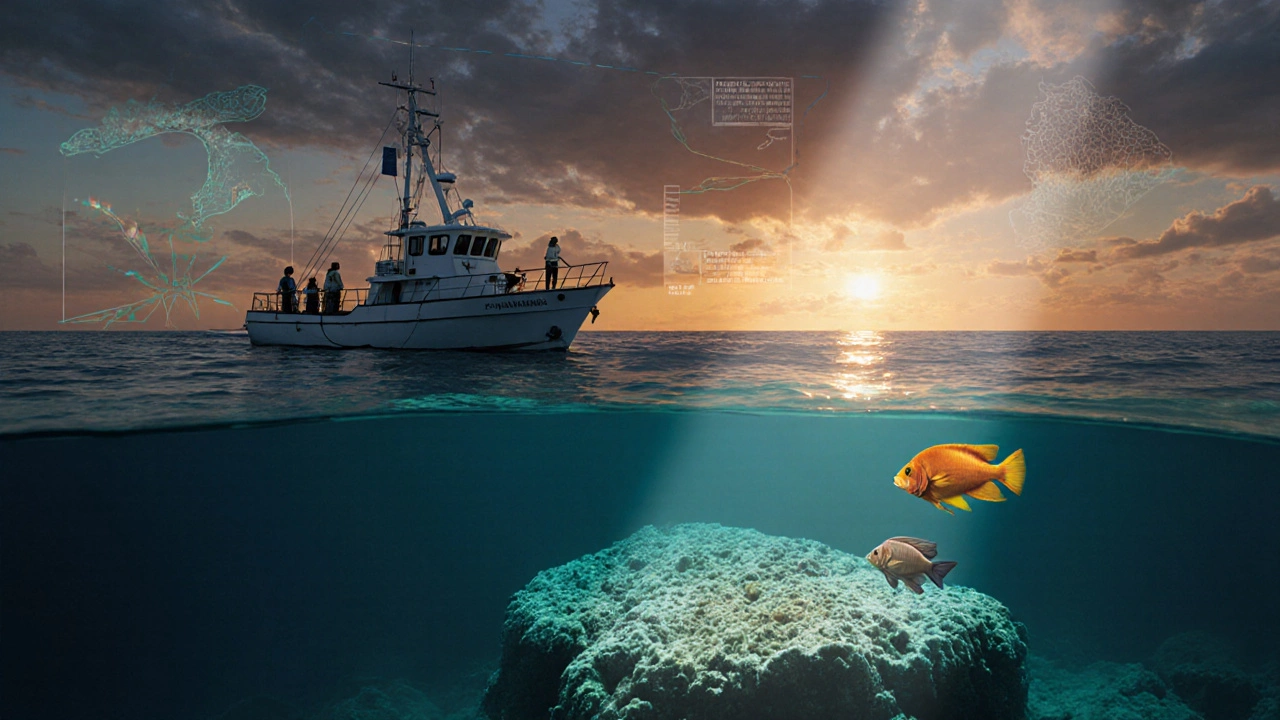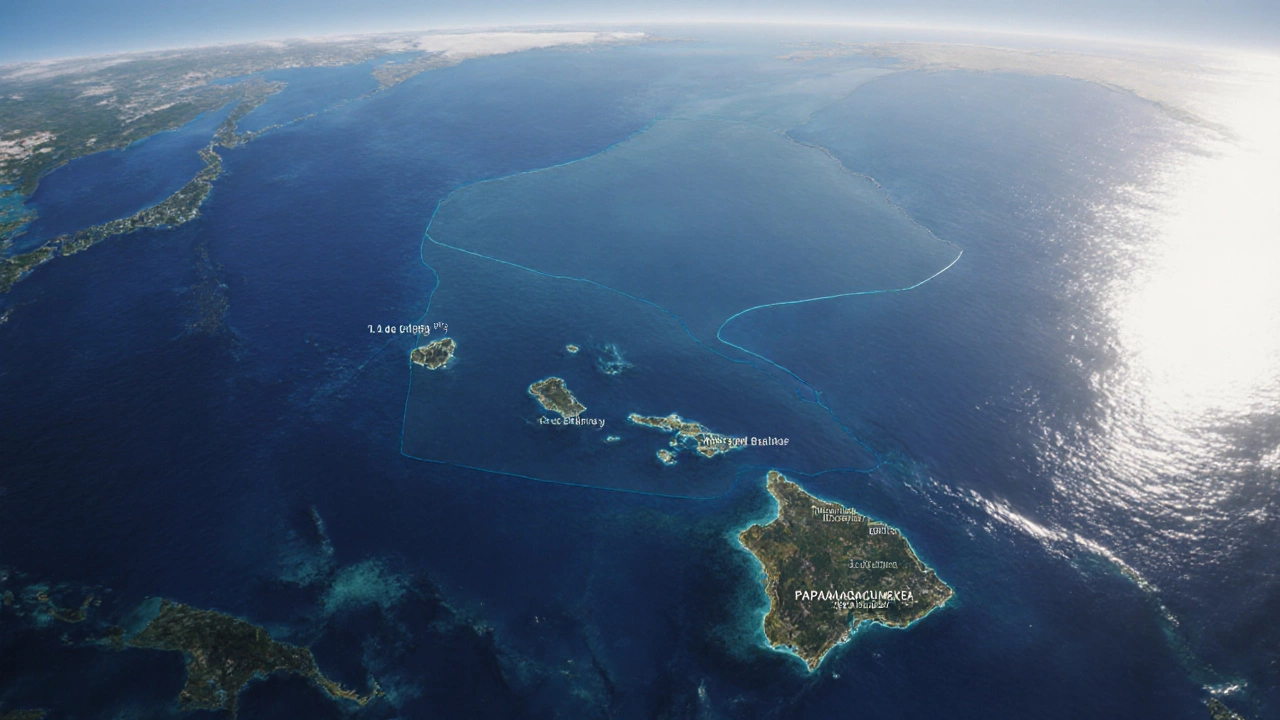World Heritage Site Size Comparison
Compare the size of the world's largest natural World Heritage sites to understand their scale relative to each other and familiar geographical areas.
Papahānaumokuākea Marine National Monument covers 1,416,400 km² - larger than many countries and entire continents.
Papahānaumokuākea vs.
When you hear the phrase largest natural world heritage site, most travelers picture sprawling savannas or massive coral reefs. The reality is a remote marine landscape that stretches across the central Pacific, guarding some of the planet’s most pristine ecosystems. This article uncovers exactly which site holds the title, why it matters, and how you can explore it responsibly.
Quick Takeaways
- Papahānaumokuākea Marine National Monument is the largest natural world heritage site at over 1.4 million km².
- It spans the Northwestern Hawaiian Islands and includes more than 7,000 species, many of which are endemic.
- Inscribed by UNESCO in 2010, the site combines cultural monuments with unparalleled marine biodiversity.
- Visiting requires a permit, a research vessel, or a guided eco‑tour; there are no regular tourist facilities.
- Conservation challenges include climate‑change‑driven bleaching, illegal fishing, and rising sea levels.
Now, let’s break down what makes a World Heritage site “natural,” how Papahānaumokuākea earned its record‑size badge, and what you should know before you even think about setting sail.
What qualifies a site as a natural World Heritage?
UNESCO designates a place as a natural World Heritage when it meets at least one of three criteria:
- Criterion VII: Contains superlative natural phenomena or areas of exceptional natural beauty.
- Criterion VIII: Represents major stages of earth’s history, including ongoing geological processes.
- Criterion IX: Provides significant ongoing ecological and biological processes.
- Criterion X: Hosts the most important natural habitats for in‑situ conservation of biological diversity.
Sites can be purely natural, or a mixed cultural‑natural property when they also preserve historic human footprints. The size of a site isn’t a criterion, but larger protected areas usually score high on biodiversity and ecological processes.
Meet Papahānaumokuākea - the record‑holder
Papahānaumokuākea is a marine national monument that stretches across the Northwestern Hawaiian Islands, covering roughly 1,416,400 km² (546,000 square miles). Inscribed on the UNESCO World Heritage List in 2010, it satisfies Criteria VII, VIII, IX, and X, making it a benchmark for marine conservation worldwide.
The name blends two Hawaiian creation deities-Papahānaumoku (Earth Mother) and Kāne‑ō‑Kahi (Sky Father)-reflecting the deep cultural ties of native Hawaiians to the sea and stars. The monument protects more than 7,000 marine species, including the iconic green sea turtle, humpback whales, and over 1,000 species of coral.
Geologically, the archipelago showcases volcanic islands that have drifted northward over millions of years, forming atolls, seamounts, and deep‑sea habitats. This makes the area a living laboratory for studying plate tectonics, reef formation, and climate adaptation.

Why size matters - ecological and cultural impact
A protected area of this magnitude offers several advantages:
- Resilience: Larger ecosystems can better absorb shocks like bleaching events or invasive species.
- Connectivity: The spread of islands acts as stepping‑stones for migratory species, ensuring genetic flow across the Pacific.
- Cultural continuity: Ancient Hawaiian fishponds and burial sites are preserved alongside thriving ecosystems, providing a holistic view of human‑environment interaction.
- Scientific value: Researchers can conduct long‑term monitoring across multiple habitats-lagoon, reef, open ocean-within a single protected jurisdiction.
These benefits reinforce UNESCO’s mandate: protecting sites that offer universal value for present and future generations.
How it stacks up against other giant natural World Heritage sites
| Site | Area (km²) | Year Inscribed | Key Features |
|---|---|---|---|
| Papahānaumokuākea | 1,416,400 | 2010 | Marine biodiversity, cultural sites, active volcanic seamounts |
| Great Barrier Reef | 344,400 | 1981 | World’s largest coral reef system, 2,900 individual reefs |
| Serengeti National Park | 14,763 | 1981 | Annual Great Migration, predator‑prey dynamics |
The sheer scale of Papahānaumokuākea dwarfs even the famous Great Barrier Reef. While the Reef remains a tourism hotspot, Papahānaumokuākea’s isolation limits human impact, preserving its ecosystems in a near‑pristine state.
Visiting Papahānaumokuākea - what you need to know
Because the monument is a protected marine reserve, spontaneous tourism isn’t possible. Here’s a realistic roadmap:
- Permits: The U.S. Office of Hawaiian Affairs issues a limited number of scientific and cultural permits each year. Applications close 12 months before the intended trip.
- Access points: Most vessels depart from Honolulu or the island of Oahu, heading north toward the uninhabited islands.
- Best season: April to October offers calmer seas and higher visibility for snorkeling and diving.
- Accommodations: No hotels exist on the islands. Visitors stay on research vessels or on board a chartered eco‑tour boat.
- What to bring: Full‑face snorkel masks, reef‑safe sunscreen, and a personal flotation device are mandatory. Pack biodegradable toiletries to avoid contaminating the water.
Even with a permit, activities are tightly regulated: no anchoring on coral, strict limits on waste, and a ban on any form of extractive fishing. The aim is to keep the environment as untouched as possible.

Protecting the giant - current challenges and future plans
Despite its protected status, Papahānaumokuākea faces several threats:
- Climate change: Rising sea temperatures cause coral bleaching, while acidification hampers reef growth.
- Invasive species: The lionfish, introduced accidentally, now preys on native fish and disrupts food webs.
- Illegal fishing: Although patrols increase, the vastness of the area makes enforcement difficult.
U.S. agencies, in partnership with Hawaiian cultural groups, have launched a 10‑year management plan that includes:
- Expanded satellite monitoring to detect unauthorized vessels.
- Restoration projects that out‑plant resilient coral species.
- Community outreach programs that teach traditional navigation and stewardship to youth.
These efforts aim to preserve both the ecological marvel and the cultural narratives that have survived for centuries.
What other massive natural World Heritage sites are worth exploring?
If you’re intrigued by mega‑conservation areas, consider adding these to your bucket list (each has its own permit system and visitor guidelines):
- Komodo National Park (Indonesia): Home to the famous Komodo dragons and vibrant marine life across 1,200 km².
- Denali National Park (USA): While not a UNESCO World Heritage site, it’s a massive natural reserve that rivals many heritage lands in biodiversity.
- Sundarbans National Park (Bangladesh/India): The world’s largest mangrove forest, spanning over 10,000 km² and providing critical habitat for the Bengal tiger.
Each destination illustrates a different facet of natural heritage-from terrestrial giants to marine expanses-showing how varied the planet’s most valuable ecosystems can be.
Frequently Asked Questions
Is Papahānaumokuākea open to regular tourists?
No. The site is a protected marine reserve, and only researchers, cultural practitioners, or participants in licensed eco‑tours may enter. All visits require a permit issued by the U.S. Office of Hawaiian Affairs.
What makes Papahānaumokuākea larger than the Great Barrier Reef?
The UNESCO World Heritage boundary for Papahānaumokuākea covers over 1.4 million km² of open ocean, seamounts, and island groups, whereas the Great Barrier Reef’s listed area is about 344,000 km². The marine monument’s inclusion of vast pelagic zones dramatically increases its total size.
Can I dive in Papahānaumokuākea?
Yes, but only on a permitted scientific or eco‑tour dive. Divers must follow strict guidelines: no touching coral, no use of single‑use plastics, and all equipment must be reef‑safe.
How does climate change specifically affect the monument?
Warmer sea temperatures trigger coral bleaching, reducing reef cover and affecting fish populations that depend on the coral. Ocean acidification weakens the skeletal structure of corals, making them more vulnerable to storms.
Are there any cultural sites within Papahānaumokuākea?
Yes. The monument protects ancient Hawaiian heiaus (temple sites), petroglyphs, and historic fishing shrines that date back over a thousand years, linking the natural and cultural narratives of the islands.
